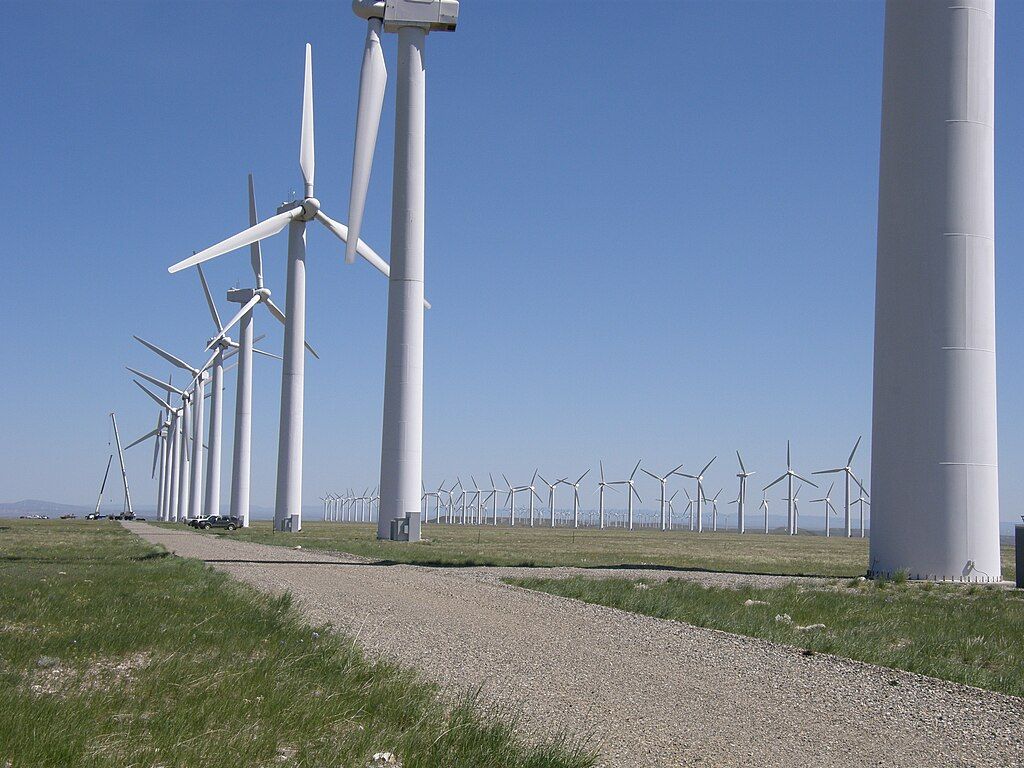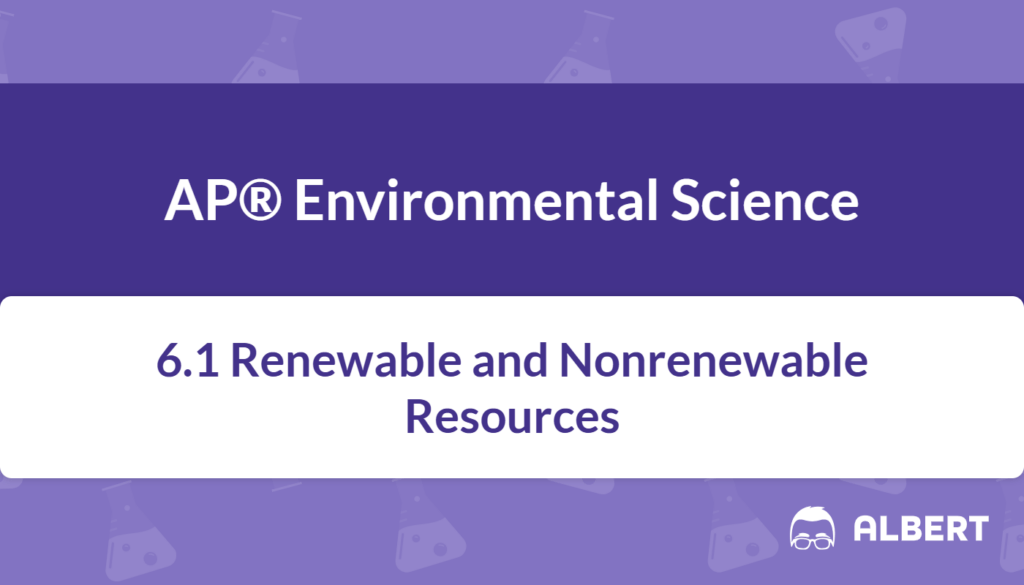What We Review
Introduction
Energy resources, including renewable and nonrenewable resources, power activities as varied as heating homes, charging cell phones, and lighting cities. They also shape economic growth, public health, and environmental sustainability. Therefore, understanding where energy comes from and how it affects the planet is a critical part of AP® Environmental Science.
Energy resources generally fall into two categories: renewable or nonrenewable. Each category has unique characteristics and plays a different role in everyday life. However, both significantly influence the carbon cycle and can contribute to climate change. This post explores the differences between renewable and nonrenewable resources and shows why these distinctions matter for the future.
The purpose here is to break down these ideas into manageable parts. By the end, the concepts of renewable and nonrenewable resources, including relevant calculations, should be clearer, making it easier to evaluate how each resource can shape human and environmental well‑being.
What Are Renewable Resources?
Renewable resources are natural energy sources that can be replenished quickly. They are often derived from processes that naturally occur on Earth, such as sunlight, wind, or moving water. Unlike nonrenewable resources, renewable ones do not exist only in fixed amounts. Instead, they regenerate or are perpetually available, making them more sustainable in the long term.
These resources have several defining characteristics:
- They can usually be harnessed without permanently depleting the resource.
- They often produce little to no carbon emissions during operation.
- They depend on natural, recurring cycles like the water cycle, the wind cycle, or solar radiation.
Here are key examples of renewable resources:
- Solar energy (capturing sunlight for electricity).
- Wind energy (using turbines to convert wind power into electricity).
- Hydropower (harnessing flowing water to drive turbines).
Moreover, as the global population grows according to various population growth models, renewable energy takes on an even more critical role in meeting energy demands without rapidly depleting the Earth’s resources.

Example Problem: Calculating Energy Output from a Solar Panel
Solar panels convert sunlight into electricity using their photovoltaic cells. The amount of electricity produced depends on factors like panel efficiency, area, and sunlight exposure.
- Suppose a solar panel has an efficiency of 20%, an area of A = 2\text{ m}^2, and an average sunlight intensity of I = 1000\text{ W/m}^2.
- Assume the panel receives this intensity for t = 4 \text{ hours} (which is 4 \times 3600 = 14400 \text{ seconds}).
- First, find the total solar energy striking the panel: E_{\text{in}} = I \times A \times t = 1000 \times 2 \times 14400 = 28{,}800{,}000\text{ J}.
- Next, calculate the useful electrical energy output by multiplying by the efficiency: E_{\text{out}} = \eta \times E_{\text{in}} = 0.2 \times 28{,}800{,}000 = 5{,}760{,}000\text{ J}.
- In this example, approximately 5.76 million joules of electrical energy come from the solar panel during those four hours.
Therefore, a solar panel’s generated power depends on sunlight intensity, area, and efficiency. Using renewable energy sources, such as solar, helps reduce dependence on finite resources and supports cleaner energy solutions.
What Are Nonrenewable Resources?
Nonrenewable resources exist in finite quantities. They cannot be replaced at the rate they are consumed. As a result, once these resources are depleted, they are either gone forever or require very long periods—often millions of years—to form again.
Several characteristics define nonrenewable resources:
- They come from materials that form extremely slowly, such as fossil fuels made from ancient plant and animal remains.
- They often require extensive mining or drilling processes.
- They can produce more carbon emissions than most renewable sources.
Fossil fuels (coal, oil, and natural gas) represent the primary nonrenewable resources. Another important example is nuclear energy, which relies on uranium. Uranium supplies are limited, and proper disposal of radioactive waste poses significant challenges. However, nuclear energy produces fewer greenhouse gas emissions during operation compared to fossil fuels, making it a complex topic within environmental science.
Example Problem: Estimating the Amount of Coal Needed for Energy Production
Coal is widely used to generate electricity. Assume a power plant needs 6 \times 10^9\text{ J} of energy for a specific operation.
- The heat content of coal can vary, but, for example, use 3 \times 10^7\text{ J/kg}.
- To find out how many kilograms of coal are required, divide the total needed energy by the energy content of coal: \text{Mass of coal} = \frac{6 \times 10^9}{3 \times 10^7} = 200 \text{ kg}.
- This means about 200 kilograms of coal are needed to provide 6 \times 10^9\text{ J} of energy under these conditions.
Thus, nonrenewable resources require careful management because they cannot be naturally replenished at the rate of consumption. Furthermore, burning fossil fuels often releases carbon dioxide, guiding more attention toward the carbon cycle and its role in climate change.
Comparing Renewable and Nonrenewable Resources
Renewable and nonrenewable resources differ in fundamental ways:
- Availability: Renewables are replenished quickly, while nonrenewables are finite.
- Environmental impact: Renewables rarely produce harmful byproducts. However, nonrenewables often generate more waste and emissions that can accelerate climate change.
- Characteristics of energy transformation: Energy transformations in a wind farm, for instance, rely on mechanical wind power turning a turbine to create electricity. In contrast, a coal‑fired power plant depends on burning coal to boil water, producing steam that drives a turbine.
Therefore, when deciding which resources to use, it is vital to consider availability, costs, and long‑term consequences for both people and ecosystems. Additionally, population growth and industrial expansion place increasing demand on these resources, fueling discussions around sustainability and environmental health.
Why Is This Important?
Choosing between renewable and nonrenewable resources affects the future of climate change, public health, and economic stability. The carbon dioxide released by burning fossil fuels, for example, influences the carbon cycle and can lead to global temperature increases. Conversely, using wind or solar can reduce greenhouse gas emissions but has its own challenges, including the need to develop large energy storage systems for times when there is less wind or sunlight.
Technology plays a crucial role in improving renewable energy sources. More efficient solar panels, better battery storage, and innovations in hydropower systems are making renewable energy more accessible. However, global energy systems do not change overnight. Both types of resources are still widely used, and the transition to more sustainable energy often requires public support, financial investment, and thoughtful policies.
In AP Environmental Science, these topics align with essential standards. Understanding the difference between nonrenewable and renewable energy sources clarifies how energy transformations happen and why some resources cannot be easily replaced.
Conclusion
Renewable resources—such as solar, wind, and hydropower—are often seen as the future of cleaner energy. They do not run out in the same way fossil fuels do, and they produce fewer harmful emissions. In contrast, nonrenewable resources may be cheaper or more available in certain regions, yet they exist in limited quantities and produce higher carbon emissions.
Students aiming to excel in AP® Environmental Science benefit from a strong grasp of these fundamentals. Considering the role of population growth and industrial development highlights the urgent need for sustainable solutions. Moreover, analyzing energy transformations helps illustrate exactly how different resources are converted to electricity or fuel. Ultimately, renewable and nonrenewable resources will likely coexist, but investing in long‑term renewable strategies appears vital for a sustainable future.
Key Vocabulary
- Renewable Resources: Natural resources that can be replenished naturally at a rate equal to or faster than they are consumed.
- Nonrenewable Resources: Resources that exist in a finite amount and cannot be easily replaced once depleted.
- Energy Transformation: The process of changing energy from one form to another, such as converting wind energy into electricity.
- Solar Panel Efficiency: A measure of how much sunlight a solar panel can convert into usable electricity.
- Fossil Fuels: Energy sources like coal, oil, and natural gas that formed from ancient organic matter and release carbon dioxide when burned.
Sharpen Your Skills for AP® Environmental Science
Are you preparing for the AP® Environmental Science test? We’ve got you covered! Try our review articles designed to help you confidently tackle real-world AP® Environmental Science problems. You’ll find everything you need to succeed, from quick tips to detailed strategies. Start exploring now!
Need help preparing for your AP® Environmental Science exam?
Albert has hundreds of AP® Environmental Science practice questions, free response, and full-length practice tests to try out.








